Today we turned our attention to works at the Arsenale, the 18C boatyard that produced the Venetian trading fleet. Long in the custody of the Italian Navy, some buildings are made available to the Biennale, and these abandoned industrial spaces are at once challenging and atmospheric. The People's Republic of China Pavilion has for several years been lodged in a former boiler room that -- since the enormous boilers are still in place -- presents particularly interesting installation obstacles. This year, perfumed steam enveloped the visitor as they entered, and when it cleared, hundreds of delicate earthenware vases became visible, threading paths around the boilers.
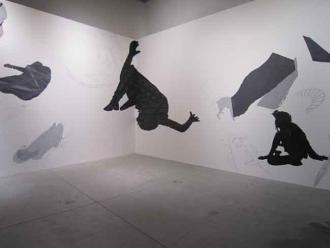
Praneet Soi, untitled mural project (2011). Photo: Marjorie Och
India had its first official representation this year, and among the works is a striking mural design by Praneet Soi whose silhouetted falling figures reminded us of the work of a prominent New Mexico printmaker, Spencer Fidler. The silhouette universalizes the human body, and makes it suggestive of narrative. The larger-than-life scale of both artists' figures envelops the viewer in a landscape that extends beyond the confines of the wall. As curators, thinking about bringing disparate artists like these two together is one of the joys of visiting the Biennale.
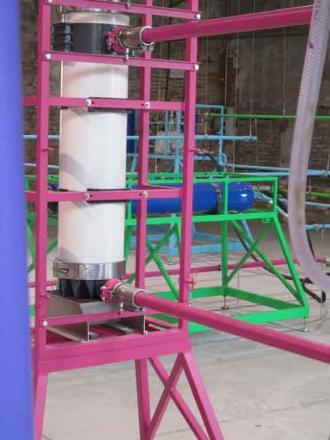
Ayse Erkmen, Plan B. Water purification units (2011) Photo: Preston Thayer
In our last dispatch, we interviewed Sigalit Landau, who transformed the Israeli pavilion into a metaphor for fresh and saltwater resources in the Dead Sea; in the Arsenale, Turkish artist Ayse Erkmen installed a Mondrianesque water purification plant, drawing water from the adjacent canal and returning it fit to drink via an elaborate system of color-coded pipes and filters, proving once again that the Venetian lagoon is conducive to artists exploring environmental concerns.
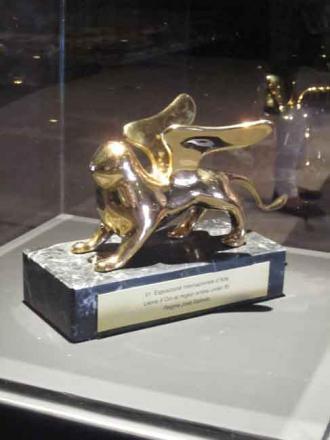
Regina Jose Galindo, False Leon (2011) cast bronze and Guatemalan gold. Photo: Marjorie Och
Guatemalan artist Regina Galindo won the Golden Lion award for best young artist at the Biennale in 2005. Two years later, she had to sell the trophy to pay her bills; more recently she had a copy made. Her statement describes in part the "precariousness in contemporary art" that leads artists to sell their prizes for cash, and draws a parallel to the looting of native gold in colonial Latin America.
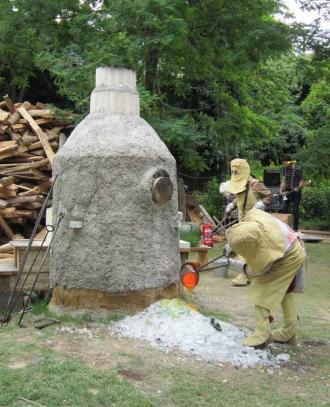
Gelatin. Multi-media performance (2011) Photo: Marjorie Och
Lastly, a rock band accompanied a multi-media nod to Hieronymous Bosch in the woods behind the Arsenale --

Gelatin. Multi-media performance (2011) Photo: Preston Thayer
as the Austrian collective Gelatin staged a pour of hot glass while two lads in the buff scampered about the woodpile that fuels the glass furnace. Bringing to life images central to Bosch's most disturbing paintings raises questions about the purpose of art imitating art. It is hard to say if Bosch would have been proud or offended by the homage!
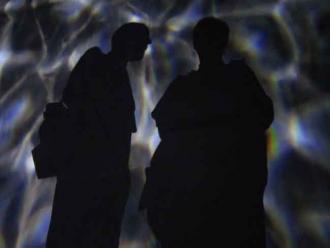
Thayer and Och at the Saudi Arabian pavilion. Photo: Marjorie Och
Reporting from La Biennale di Venezia, Preston Thayer and Marjorie Och.